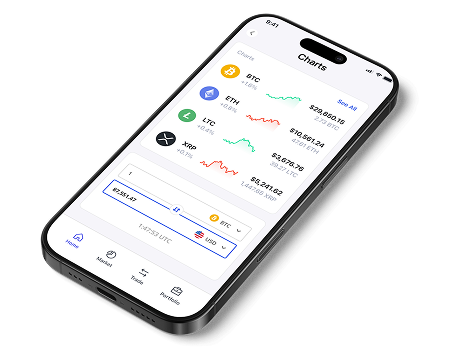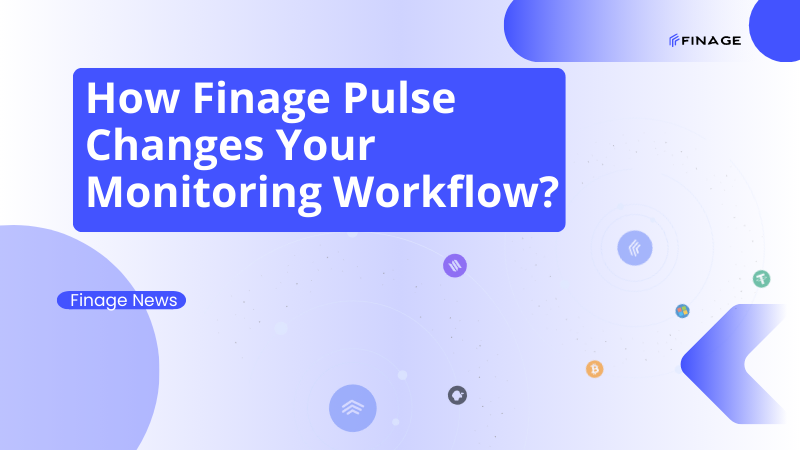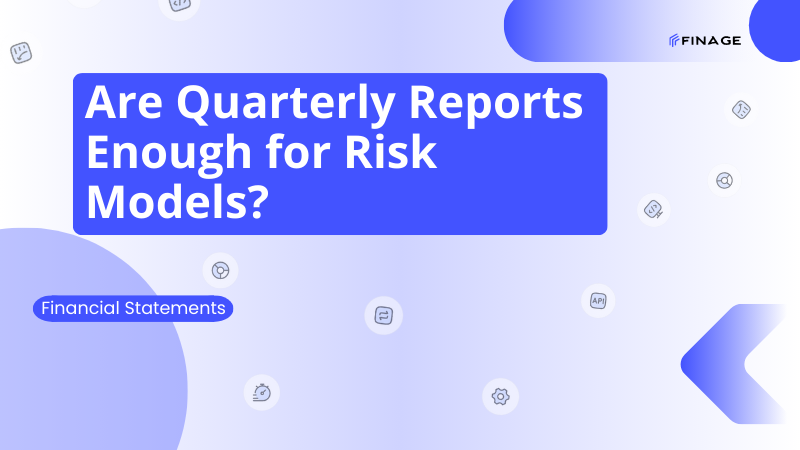How to Present Fintech Ideas: Examples, Slides & PDF Templates
7 min read • July 28, 2025

Introduction
Pitching a fintech product isn’t like pitching a coffee app.
Whether you're building a trading tool, a financial analytics dashboard, or a multi-asset API platform, your presentation has to do more than explain features; it needs to convey trust, scalability, and innovation. And most importantly, it has to do all that with clarity.
A great fintech presentation PDF doesn’t just look good. It delivers your value prop with precision, reflects deep market insight, and gives your audience exactly what they need, without overwhelming them.
In this blog, we’ll walk through how to build a high-impact fintech pitch deck, what makes it different from a typical startup slide deck, and how to design your PDF and slides in a way that works for investors, internal stakeholders, and even end users.
Table of Contents
- Why Fintech Presentations Require a Different Approach
- Key Elements of an Effective Fintech Presentation PDF
- Design Tips: Visuals, Flow, and Tone for Fintech Slides
- Real-World Use Cases: What Investors, Teams, and Clients Expect
- Final Thoughts
1. Why Fintech Presentations Require a Different Approach
Fintech operates at the intersection of regulation, innovation, and infrastructure, making it one of the most complex sectors to explain quickly. Unlike consumer apps or lifestyle tools, fintech products often involve abstract data flows, multi-layered APIs, or compliance-heavy workflows that aren’t easy to grasp on the first slide.
That’s why a generic startup pitch format often falls short. A strong fintech presentation PDF needs to strike a balance between technical clarity and business relevance.
Here’s what sets fintech presentations apart:
Multiple Audiences
You’re often speaking to both technical and non-technical stakeholders, investors, developers, compliance officers, and enterprise buyers. Your slides need to meet all of them where they are.
Higher Stakes
Fintech products manage real money, sensitive data, or regulated processes. That adds an immediate layer of scrutiny to your architecture, risk model, and data strategy.
Abstract Value Propositions
You’re not just selling an app, you’re offering speed, accuracy, compliance, or automation. These are invisible benefits that need to be shown with clarity, not just claimed.
Longer Sales Cycles
Especially in B2B or infrastructure fintech, presentations may need to support multiple rounds of internal evaluation. A clear, exportable PDF makes your message stick even after the meeting ends.
Fintech decks aren’t harder to build, but they are easier to get wrong. The right structure, visuals, and tone can make all the difference between a confused audience and a confident next step.
2. Key Elements of an Effective Fintech Presentation PDF
Every fintech presentation PDF should be built to inform, convince, and scale. That means the structure isn’t just aesthetic, it’s strategic. Whether you’re pitching to investors, onboarding clients, or aligning internal teams, certain sections need to be there, clearly defined and carefully sequenced.
Here’s a foundational outline you can build on:
Title & Vision Statement
Open strong with a one-line summary of what your fintech solution does, and why it matters right now.
Problem & Market Gap
What’s broken in the current system? Where is the inefficiency, risk, or unmet demand? Ground your audience in the “why.”
Your Solution
Describe your product or platform in a way that feels accessible to both technical and non-technical viewers. Focus on benefits before features.
Product Architecture or Workflow
A diagram here is essential. Show how your system works, APIs, data flow, integrations, security layers, all in one clear visual.
Go-to-Market & Revenue Model
How will you reach your target users? What’s your business model: B2B SaaS, data licensing, volume-based pricing?
Market Opportunity
Back your claims with numbers. Total addressable market, growth trends, or regulatory tailwinds help frame your relevance.
Traction & Metrics
If you have users, revenue, or partnerships, this is the moment to share. If not, share projections or early pilot results.
Team & Expertise
Especially in fintech, credibility matters. Highlight your technical, regulatory, or financial domain knowledge.
Roadmap & Call to Action
Where are you headed next, and what do you want from your audience? Investment? Feedback? A pilot partnership?
A great PDF is more than a set of slides; it’s a leave-behind that carries your story when you’re not in the room. In fintech, that clarity is currency.
3. Design Tips: Visuals, Flow, and Tone for Fintech Slides
A well-structured fintech presentation PDF can still fall flat if the visual design doesn’t support clarity. In fintech, where abstract systems and complex logic dominate, design isn’t decoration, it’s how you make ideas land.
Here are key design strategies to keep your slides effective and human-friendly:
Use Diagrams to Explain the Invisible
Fintech infrastructure isn’t something you can photograph. Use flowcharts, data pipelines, and system architecture visuals to walk your audience through how your solution works. Keep them clean and legible.
Maintain a Clean, Minimal Layout
Avoid clutter. One core idea per slide is a solid rule. White space gives your ideas room to breathe, and your audience a moment to process.
Choose Colors That Reflect Trust and Clarity
Fintech design tends to favor cool tones like blue, gray, and teal for a reason: they communicate stability and precision. Avoid overusing red, orange, or bright green unless for emphasis.
Match Typography to Your Message
Use clean, modern fonts. Hierarchy is key, titles should stand out, body text should be highly readable, and callouts should be distinct.
Tone: Confident, Not Buzzwordy
Let your product speak for itself. Skip the overpromises, inflated jargon, or hyperbole. Instead, focus on what’s real: speed, accuracy, security, compliance, and customer outcomes.
Make It Exportable
Your slide deck will likely be shared after the meeting. Test your PDF for readability without narration. Add short explanatory notes or tooltips where needed to ensure it works standalone.
When you’re presenting fintech, your goal isn’t to impress; it’s to build confidence. A visually clear and tonally grounded PDF builds credibility and makes your story easier to say “yes” to.
4. Real-World Use Cases: What Investors, Teams, and Clients Expect
Not every fintech presentation PDF serves the same purpose, and that’s where many founders get tripped up. The way you present to a VC isn’t the same as how you pitch to a corporate client or align your internal team. Tailoring your content to the context isn’t a bonus; it’s essential.
Here’s how your messaging should adapt across use cases:
For Investors
Investors want scale, differentiation, and a strong go-to-market plan. They’re asking:
- Is this solving a real pain point in a growing market?
- Does the team have the technical and financial acumen to execute?
- Can this generate returns in the current regulatory and economic environment?
Keep it outcome-focused. Include financial projections, customer acquisition strategies, and a clear ask (funding amount, round type, use of funds).
For Enterprise Clients or Partners
Clients want to reduce risk, save time, or create new value. They’re asking:
- How does this integrate with our current stack?
- Is the data reliable, compliant, and secure?
- What support do you offer post-integration?
Use trust signals: API uptime, SLAs, ISO certifications, customer testimonials, or case studies. Focus on onboarding simplicity and tangible results.
For Internal Teams or Stakeholders
Your team wants direction and alignment. They’re asking:
- What exactly are we building, and why?
- Who are we serving, and how will we measure success?
- What’s the roadmap for the next quarter or year?
Here, your slides should clarify roles, milestones, and the product vision, not just the pitch. A strong internal PDF keeps teams focused and connected.
By building presentation flows tailored to each audience, you not only increase your chances of being understood but also of being trusted.
Final Thoughts
A strong fintech presentation PDF doesn’t just tell your story; it shapes how people remember it. In a space where trust, clarity, and execution matter more than hype, your slides should reflect the precision of your product and the depth of your thinking.
Whether you're presenting to investors, clients, or your team, your deck is more than a pitch; it's an early signal of how you operate. Clean structure, clear value, and focused messaging can turn uncertainty into buy-in.
And when it comes to building fintech products powered by real-time market data, Finage helps teams move from concept to launch with confidence. With developer-friendly APIs, real-time global coverage, and unified infrastructure for multiple asset classes, Finage provides more than just data - it gives you momentum.
If you’re presenting a vision built on data, ensure your tools keep pace with it.
Claim Your Free API Key Today
Access stock, forex and crypto market data with a free API key—no credit card required.

Stay Informed, Stay Ahead
Finage Blog: Data-Driven Insights & Ideas
Discover company news, announcements, updates, guides and more


